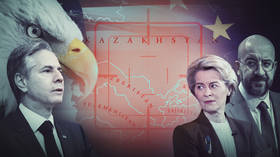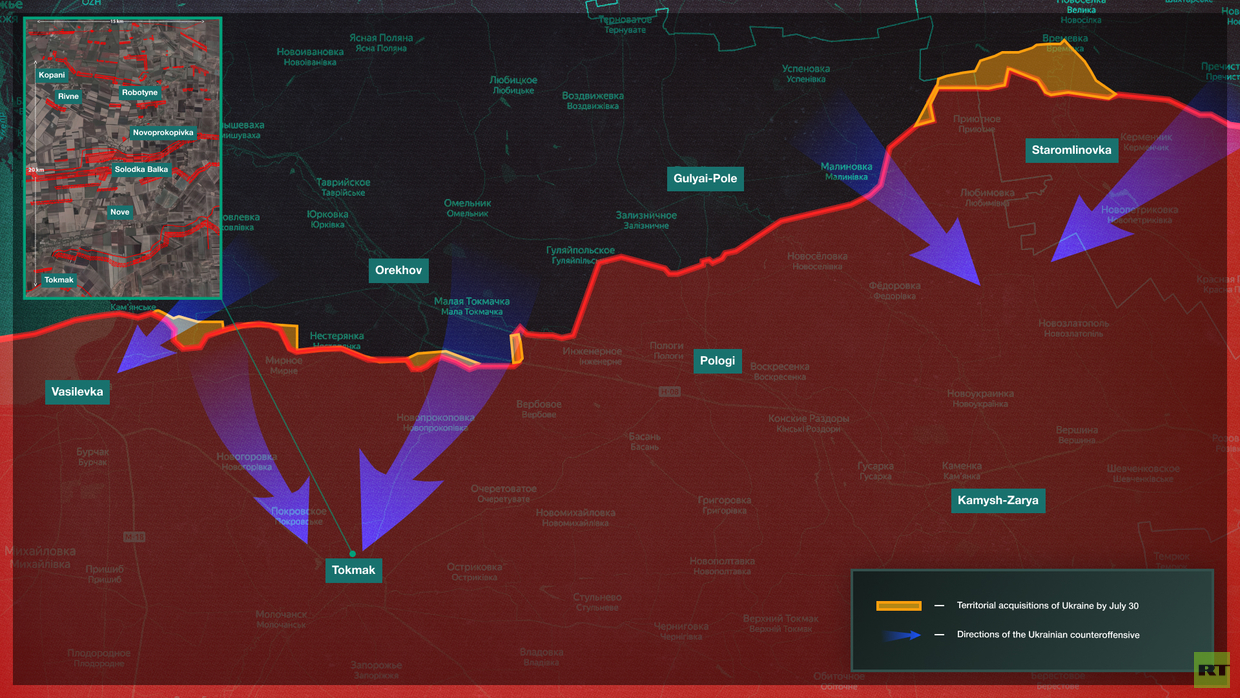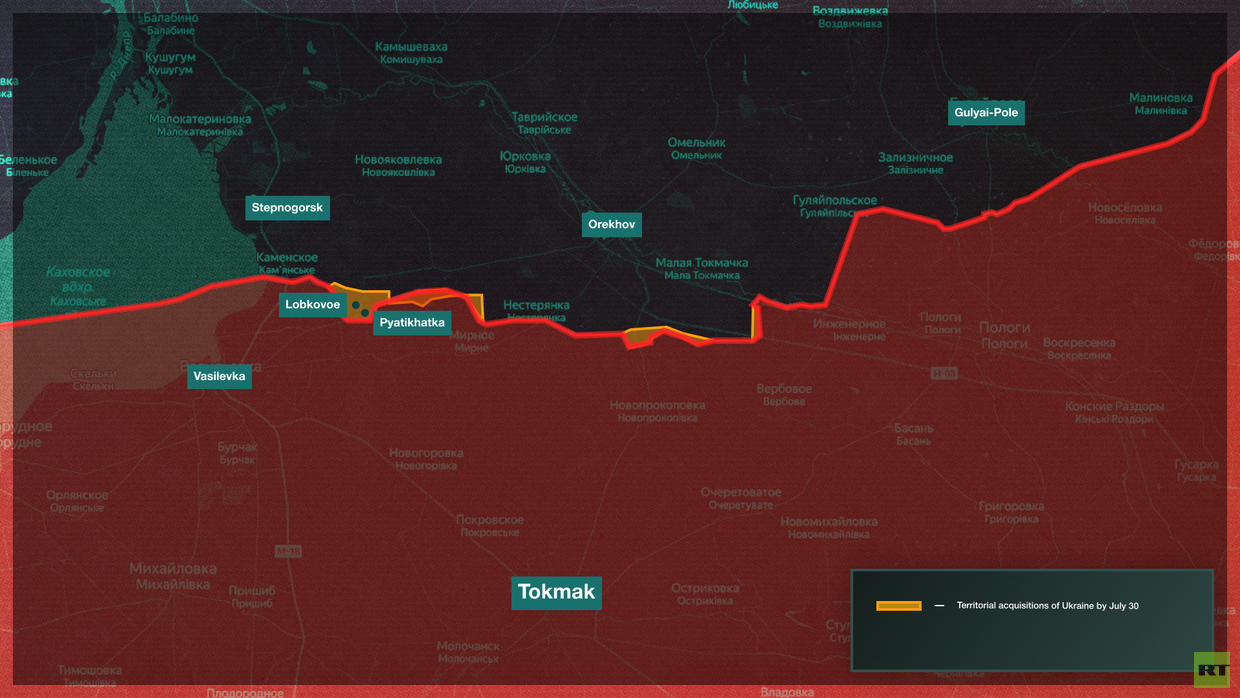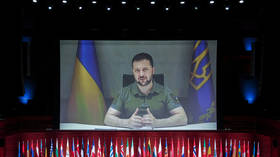The anticipated ‘blitzkrieg’ strategy was not successful and the Ukrainian offensive became stuck in positional warfare, losing a lot of the military equipment provided to it by the West. By the end of June, Kiev managed to occupy a mere eight villages, but was not able to reach the main Russian fortifications.
Zugzwang
Description
Zugzwang is a situation found in chess and other turn-based games wherein one player is put at a disadvantage because of their obligation to make a move; A player is said to be "in zugzwang" when any legal move will worsen their position. ---- WikipediaZelensky's Zugzwang: Ukraine's ‘blitzkrieg’ strategy has failed, so where does that leave its much-hyped counteroffensive?
For the past six months, Kiev has been preparing a breakthrough to the Sea of Azov, but Russia wasn't planning to roll over
The counteroffensive of the Armed Forces of Ukraine (AFU), widely hyped by Ukrainian and Western officials since the beginning of the year, has been going on for nearly a month. Since June 4, Kiev's forces have been trying to advance on the southern section of the frontlines in Zaporozhye Region and in the western part of the Donetsk People’s Republic (DPR).
The anticipated ‘blitzkrieg’ strategy was not successful and the Ukrainian offensive became stuck in positional warfare, losing a lot of the military equipment provided to it by the West. By the end of June, Kiev managed to occupy a mere eight villages, but was not able to reach the main Russian fortifications.
Kiev and its Western partners are now particularly concerned about the planned breakthrough to the Sea of Azov, since the strategic goals of the counteroffensive have failed and the land corridor to Crimea remains under Russian control. So why has Ukraine’s much-hyped operation failed?
How was the current front line formed?
The front line in Zaporozhye Region and the western part of the DPR was formed in the spring of 2022. At that time, Russian troops were able to merge their Crimean units, which captured the cities of Tokmak and Pologi, with the Donbass units to form the ‘Mariupol cauldron’.
Meanwhile, the Russian Army’s attempts to move closer to Zaporozhye and capture the cities of Gulyai-Pole and Orekhov – the AFU’s main strongholds in Zaporozhye Region – were not successful.
To the east, in the area of the Vremyevsky salient, active battles continued until the summer of 2022. On July 14, the DPR territorial defense headquarters confirmed the capture of Neskuchny village south of Vremyevka – the last settlement liberated by the People’s Militia of the DPR in this section of the front.
The strategic importance of this section of the front
Even though the Russian Army did not get to Zaporozhye or flank the AFU’s positions in Donbass, the military achievements of last spring and summer were extremely important for Russia.
Firstly, Moscow took control of the Crimea-Melitopol-Berdiansk-Mariupol-Rostovskaya highway where the automobile bridge to the Crimea is located. As a result of these efforts, the peninsula became better connected with mainland Russia.
Secondly, control over these territories created a buffer zone around Crimea and forced the Ukrainians to retreat from the Sea of Azov, which became completely Russian territory. Also, Moscow was able to build a single front from the mouth of the Dnieper River to the Russian border (as it was in the summer of last year).
This positioning, however, also came with certain vulnerabilities for the Russian troops. If the Ukrainian offensive had been successful and the AFU had broken through to the Sea of Azov, the Russian front would have split into two parts. However complex, the attempt was worth it for Ukraine, since the AFU could have then blocked the Russian Army’s Donbass units and posed a serious threat to Crimea and Sevastopol – the Black Sea Fleet’s main military base.
To the east, the AFU was able to advance through the fields in the direction of the village of Rabotino, which is on the road from Orekhov to Tokmak. Both sides have suffered losses but Ukraine is also losing a vital asset – time – as the pace of the counteroffensive slows down.
Moreover, the Russian Air Force is constantly attacking UFU warehouses and staging areas. All this increases the costs of the counteroffensive and makes the Ukrainian Army’s ultimate success even less likely.
Ukraine’s broken hopes for a fast-paced war
The series of defeats has disappointed Ukrainian society, which was counting on a fast-paced operation and a breakthrough on the front. Every two weeks, Ukrainian journalist Roman Shrike polls his Telegram subscribers on the estimated duration of the war. On June 15, the option that the war will continue for ‘more than another year’ received over 50% of votes for the first time.
Propagandist Aleksey Arestovich noted that Ukraine’s success in Kharkov Region is an exception to the rule and cannot be repeated over and over again. He described the fighting in Zaporozhye Region as “a bloody fight accompanied by losses on both sides”. In order for Ukraine’s next offensive to be more successful, Arestovich says the country needs Western planes.
Meanwhile, ordinary Ukrainians, some of whom were forced to become refugees while others lost their jobs or were forcibly conscripted, see that the current situation – in which the country is growing poorer by the day and people risk danger daily – can last for many more years.
All this greatly strains society, which sees no quick victory ahead. At the same time, several cities, including a major part of Kiev, have announced a general mobilization on behalf of their regional councils. General mobilization in Ukraine has already been in effect since February 24, 2022, but these new statements demonstrate a new desperation. Of particular concern is the order for everyone liable for military duty to come to military enlistment offices, regardless of whether they have personally received a summons.
Western pressure meant that Zelensky was obliged to make a move, in the full knowledge that his hand was weak. Thus, he was like a chess player faced with a Zugzwang.
By Vladislav Ugolny, a Russian journalist born in Donetsk













